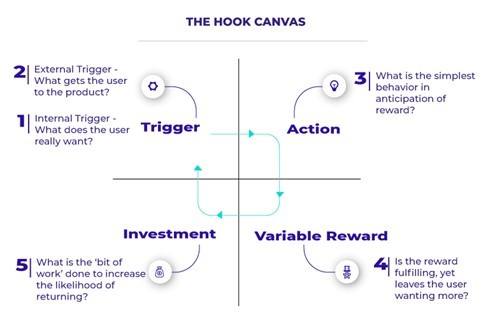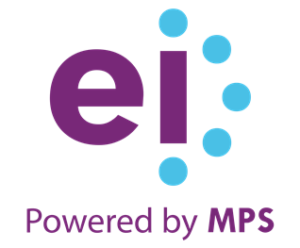Why Is There A Disconnect Between Learners And The Way Training Courses Are Designed?
Traditionally, because of the time and distance gaps among trainers, learners and content, eLearning has always had an “engagement challenge.” With the broader evolution of hybrid workplaces, those challenges, however, have expanded. Work-from-home (WFH) mandates have introduced more “learner disconnect” issues, adding to the engagement challenge.
Many eLearning programs are function-focused—they’re designed around a specific set of learning objectives—rather than learner-focused. This narrow focus further precipitates learner disengagement since it doesn’t provide virtual learners with the full scope of learning experiences they crave. The limited-focus approach also falls short on course design, which fails to sufficiently stimulate, challenge, engage, and excite the learner.
How Does Gamification Drive Learner Engagement?
In a hybrid workplace, where there are already plenty of non-work-related distractions in the environment, learners are easily disengaged when presented with run-of-the-mill training courses.
That’s why more L&D professionals are turning to game-based and gamified learning to drive engagement. Here’s why:
- Gamification design is based on a learner-centric course design, which personalizes the content based on learner likes and preferences.
- Unlike the restrictive functional focus of traditional eLearning content, gaming content is typically tied to specific learning objectives, to which individual learners relate to.
- By appealing to core learner values through game-based situations, characters, and plots, learners more readily engage with game-based learning.
- Elements of rewards and recognition in a game (badges, points, leaderboards) make learners feel appreciated and challenged.
These characteristics compel virtual learners, even those in a hybrid workplace, to persist with game-based learning. This results in higher engagement when compared to non-gaming learning content.
How Does A Well-Designed Gamification Program Improve Learner Proficiency And Business Performance?
To illustrate the importance of good gamification design, we’ll refer to a contemporary commercial behavioral model (called the Hook Model, developed by entrepreneur, author, and behavioral economist Nir Eyal), which many app developers have adopted [1]. The model helps describe how well-designed gamification programs improve learner engagement, which then translates to higher performing employees.

Here’s how the 4-phased Hook Model works in relation to gamified learning:
- A well-planned gamification design addresses a “trigger,” creating awareness for the learner to embrace the course, training program, or learning module. For example, “The new HR system goes live next month…be prepared to use it effectively!”
- It incentivizes the learner to go into action, which typically encourages them to engage with the course to satisfy the initial trigger. For example, “Have fun mastering new features, and learn how to enter your weekly time cards in just three minutes!”
- Learners are rewarded throughout the “game,” in recognition of their performance. For example, you can publish the names of employees who complete all modules, the highest-scoring employee, etc.
- Continued outreach and communication with the learner keeps them coming back for more, resulting in entrenched learning behavior. For example, “Don’t enter your time cards anymore, new features now allow you to scan seven days of data in two minutes!”
In summary, like many gaming apps, communication, motivation, recognition, and compulsion are what hooks learners to embrace gamified learning. As the learner travels through this personal learning path, they form a habit of learning new skills and traits. This engrains learner proficiency on the job and contributes to the overall business performance.
What Gamification Design Techniques Can You Adopt To Engage And Energize Your Learners?
1. Personalization: Elements That Enable Learners To Create An Identity For Themselves Within The Game
- Choice of device
Ensure learners can choose their devices (laptops, tablets, smartphones, and even desktops!) to consume your gamified content. - App-based mobile design
With many virtual workers gravitating to learning on the go, it’s vital that you deliver your gaming content in an app-based format. For this to succeed, the app design must feature lightweight, small footprint delivery, because not every app user might own unlimited, high-bandwidth mobile data plans. - Personalized learning paths
Allow learners to craft a path, within the game, that resonates with their learning objectives. This leads to greater engagement with the course. - Building a narrative
These elements may include aspects such as scenes, backdrops, music, sounds, and a general theme of the game. They help create an ambiance of “actual participation,” engagement, and involvement. - Customized avatars
This allows learners to use caricatures (icons and images) they can relate to. Playing a game as an avatar they empathize with helps learners better immerse themselves in the game. - Customized settings
An effective gamification design embraces the belief that learners learn best when they take charge of their settings. Allowing them to customize your gaming content, canvas, font colors and pitch size, orientation (portrait or landscape), and choice of tones (beeping, ringing) helps make learners feel they’re in control. - Personalized feedback
Provide customized feedback through the game based on learner behavior. This reinforces the idea that the recommendations are indeed tailored to them, and that they are not something generic.
2. The Storyline: Elements That Encourage Learners To Spend Time On The Learning Material
- Character paths and storylines (story-based learning)
Organize your gaming content around storylines. Ensure characters, on which the story is based, can branch through multiple paths to accomplish a goal. These underpin the structure around which story-based games revolve. This technique offers a more immersive learning experience [2]. - Quests
Quests, in pursuit of specific learning objectives, are a great way to engage and energize learners through creative gamification design. By cascading through the storyline, one milestone at a time, learners are persuaded to build on the lessons learned along their learning journey. - Scenarios
Multi-scenario-based gaming content lets players (learners) explore the lesson through various lenses. Unlike static storylines, which the learner may grow tired of and disengage after a few iterations, sound gamification design includes the use of scenarios that keep learners guessing from the beginning to the end of each new situation they face. Ideally, a more compelling and gripping form of this strategy may be dynamic scenarios, where each outcome evolves based on earlier choices. - Learning paths
Most learners will likely interact multiple times with the gaming content. Following a static learning path each time is a recipe for disengagement. To energize and engage your learners, create multiple paths that they may choose from, each of which could focus on specific learning objectives and outcomes.
3. Motivation Drivers: Elements That Show Progress And Development
- Personalized performance indicators
Progress bars, leaderboards, points, scores; these are hallmarks of a good gamification design. Nothing energizes a game-based learner more than seeing how well they are doing vesrus peers and fellow learners. Personalized performance indicators are a great tool to motivate individuals to put their best gaming skills to the test so that they inch higher in standing and earn peer recognition. - Designations
Hand out specialist designation indicators, such as Novice, Expert, Guru, and Ninja, to leverage an individual’s thirst for acknowledgment and credit. This will not only help individuals engage but will also spur healthy competition among groups of learners to aspire for higher designations.
4. Accomplishments: Elements That Show What Learners Have Achieved
- Badges, milestones, virtual collectibles, ranks
These provide learners with visual markers along their personalized learning paths. As learners engage with the game and earn markers for their accomplishments, they can also track those accomplishments against their own and fellow learners’ learning goals.
5. Social Drivers
- Forums and discussions
Evidence shows us that learners learn best through peer interaction. As part of your gamification design, consider including discussion boards and moderated forums. These are a great place for learners to engage with fellow learners, share gaming experiences, and provide important learning tips to groups of like-minded members. - Shareability
Shared User-Generated Content (UGC) is a great way to create strong learning and performance ecosystems [3]. As learners interact with various aspects of game-based learning, encourage them to post and share best practices about the learning objectives and outcomes. This enhances the value of interactions with fellow learners and energizes participants to actively document and discuss shared experiences. - Feedback/coaching mechanisms
One effective gamification design principle is to include helpful feedback features. Good feedback doesn’t necessarily mean offering critique. When framed properly, offering constructive feedback through every phase of the game acts as a coaching tool that helps learners improve performance in the next stage. Ideally, gaming feedback must also encourage two-way interactions, where players (learners) may challenge a coach on their assessment/observations.
Parting Thoughts
The hybridization of today’s workforce has caused major challenges for eLearning designers. Traditionally developed training content doesn’t energize and engage learners. To overcome those barriers, L&D teams can focus on leveraging game-based learning, with better gamification design techniques. I hope the gamification design techniques discussed in this article will help you achieve those objectives. Meanwhile, if you have any specific queries, do contact me or leave a comment below.
References:
[1] The Hook Model: How to Manufacture Desire in 4 Steps
[2] Strategies to Enhance the Impact of Storytelling in eLearning – Featuring 3 Examples
[3] How to Use a Learning and Performance Ecosystem for Employee Development – Featuring a 4-Step Guide
Read More:
- eBook: How to Conduct an L&D Audit and Prepare a Strategic Plan for the Future
- How to Use Gamification to Promote Active Learning in the Changed Workplace Dynamics
- 8 Effective Approaches to Gamify Your VILT Programs and Drive Remote Learner Engagement
- Power Triad – Using mLearning, Microlearning, and Gamification to Create Immersive Learning Experiences
- 5 Killer Gamification Examples to Enhance the Impact of Your Corporate Training


